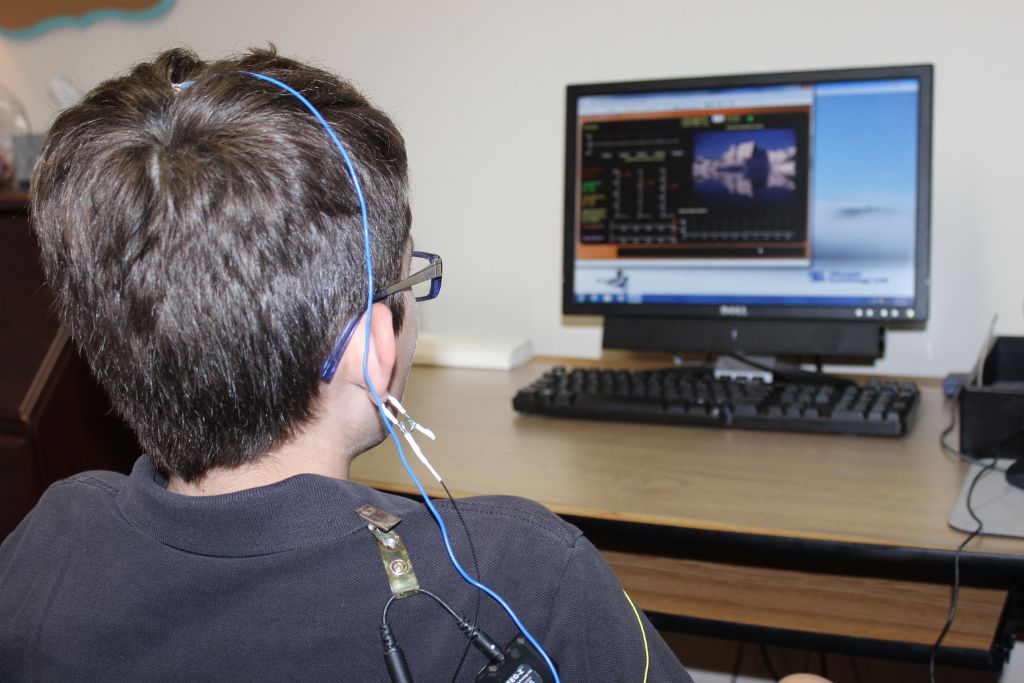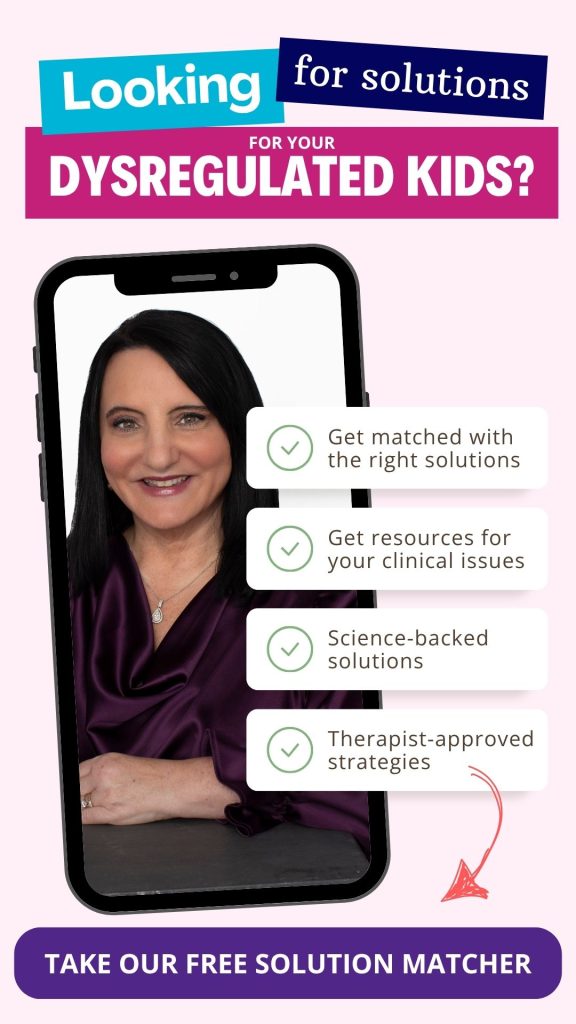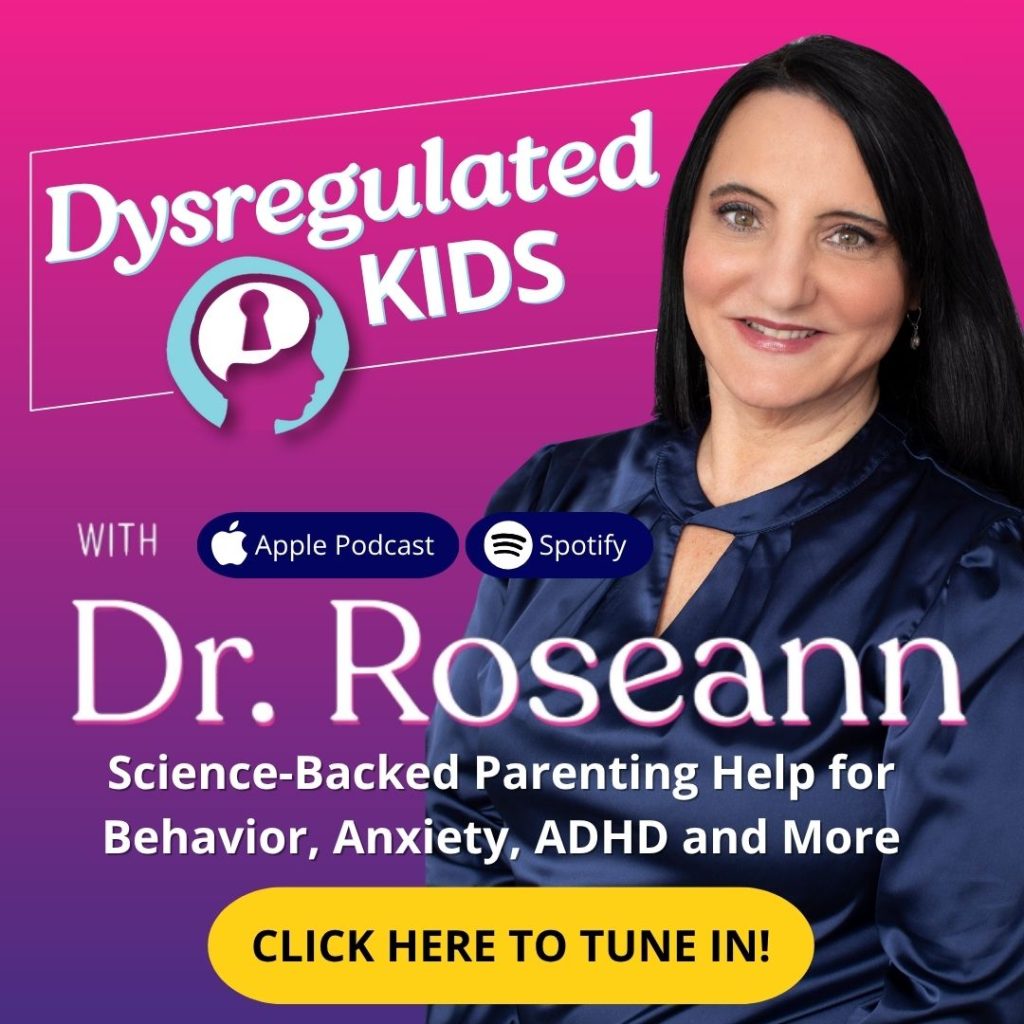Estimated reading time: 19 minutes
When nothing seems to ease your child’s focus, meltdowns, or anxiety, the real solution may not be more medication—it may be calming the brain first. That’s why more parents are turning to neurofeedback: a safe, science-backed way to help the brain regulate itself.
History Behind Neurofeedback
Neurofeedback might sound like the latest trend in brain science—but it’s actually been around much longer than most people realize.
Since the 1960s, it’s quietly helped people regulate their brains without meds—now backed by 3,000+ peer-reviewed studies and tens of thousands more that say: yes, this works.
Key milestones:
- 1950s–60s: Joseph Kamiya and Dr. Barry Sterman discovered brainwaves could be trained—research published in Psychology Today (1968).
- 1970s: Joel Lubar pioneered neurofeedback for ADHD, giving kids a science-backed, med-free focus solution.
- Vietnam War era: Studies revealed its power to help veterans recover from PTSD, anxiety, depression, and substance use.
These early breakthroughs paved the way for a trusted, drug-free tool that parents now turn to when their child’s brain needs calm and a chance to thrive.
Why Do People Use Neurofeedback?
Neurofeedback isn’t just for clinical treatment anymore—it’s something kids, teens, and even high-performing adults are using to boost how their brain works every single day.
People turn to it for all kinds of reasons:
- To ease anxiety, ADHD, OCD, and those intense emotional ups and downs
- To improve focus, mood, sleep, and self-regulation
- To boost cognitive function
And here’s the real magic: it doesn’t just manage symptoms—it rewires the brain.
Neurofeedback gently retrains brainwaves, improving neurotransmitters and helping you feel, focus, and regulate with more ease.
Research by Ghaziri et al. (2013) even shows that neurofeedback can change both white and gray matter, proving its long-term impact on brain health.
In a world full of quick fixes, neurofeedback stands out because it teaches your brain to heal itself. No side effects, no dependency. Just science, intention, and progress over time.
What you see as behavior is really brain dysregulation. And the solution? Calm the brain first—everything follows.
How Does Neurofeedback Work?

Neurofeedback is gentle and non-invasive—but don’t let that fool you. This science-backed therapy trains your child’s brain to better regulate itself, much like building strength in a muscle through repetition and feedback.
Here’s how a typical session works:
- Sensors are placed on your child’s scalp to measure brainwave activity.
- Your child watches a movie, listens to music, or plays a game—something fun and relaxing.
- When their brain moves into a calm, regulated state, they’re rewarded (e.g., clearer picture or sound).
- Over time, the brain learns to stay regulated on its own—no computer needed.
It’s like teaching the brain to ride a bike: at first, it needs guidance, but eventually, balance becomes second nature.
This process is rooted in operant conditioning, a well-studied learning method that’s been around since before color TV. But neurofeedback takes it a step further: instead of training behavior, we train brainwaves.
That’s why I always say: Calm the brain first—everything follows.
When the brain finds balance, kids do too. Parents tell me all the time, “I finally feel like I have my child back.”
That’s because what you often see as behavior is really dysregulation. And once we start rewiring from the inside out? That’s when real change sticks.
What are the Different Types of Neurofeedback?
There are several types of FDA-approved neurofeedback, including:
- EEG Neurofeedback
- Slow Cortical Potential Neurofeedback (SCP-NF)
- Low-Energy Neurofeedback System (LENS)
- Hemoencephalographic (HEG) Neurofeedback
- Live Z-score Neurofeedback
- Low-Resolution Electromagnetic Tomography (LORE-TA)
- Functional Magnetic Resonance Imaging (fMRI)
Each method has its strengths and may be better suited for certain issues—but here’s the truth: the tech matters a whole lot less than who’s guiding the process.
Long-term success comes down to two things:
- A skilled practitioner who can actually interpret your child’s brain data and adjust as needed.
- Your willingness to show up and stick with it—even when life gets chaotic.
If you’re looking for real, lasting change, work with a board-certified provider like me. You can find one at www.bcia.org.

What Does Research Say About Neurofeedback?
Neurofeedback has been used for decades to support children and teens with a wide range of mental health and neurological conditions:
It helps by guiding the brain out of a stress-activated state and into a more regulated one. When brainwaves shift into healthier rhythms, kids can focus better, stay calmer, and manage emotions with more ease.
While we always want more large-scale studies (as we do with many therapies), the research we do have is encouraging:
✔️ Meta-analyses support neurofeedback for ADHD, anxiety, and mood disorders
✔️ Real-world outcomes show better focus, fewer emotional outbursts, and steadier behavior
And in my 30+ years of clinical work, I’ve seen it firsthand: kids becoming more regulated, families finding relief, and parents saying, “I feel like I finally have my child back.”
Neurofeedback Research for ADHD and Executive Functioning
Neurofeedback is one of the most effective non-medication treatments for ADHD. The American Academy of Pediatrics even rates it as a Level 1 “Best Support” treatment—right up there with stimulant meds.
And here’s the thing: research backs it up, but so does what I see in my office every single day. When we calm the brain, kids can:
- Focus and follow through
- Manage impulses
- Stay emotionally regulated
One clinical study (Xiong, Shi & Xu, 2005) found that neurofeedback:
- Reduced core ADHD symptoms in over 90% of children
- Showed measurable improvement through neuropsychological testing
Multiple meta-analyses (Arns et al., 2009 & 2013; Micoulaud-Franch et al., 2014) also report:
- Significant reductions in inattention
- Better impulse control
- Moderate improvements in hyperactivity
And unlike meds that only work while they’re in the system, neurofeedback actually teaches the brain to self-regulate. That means lasting improvements your child can carry into school, friendships, and everyday life.
If your child hasn’t responded well to medication—or you’re just looking for a lasting, drug-free solution—neurofeedback may be the answer their brain’s been waiting for (Lofthouse et al., 2012).
Neurofeedback Research for Anxiety
When a child’s brain gets stuck in overdrive, anxiety doesn’t whisper—it roars. It hijacks sleep, focus, mood, even their physical health.
And here’s the truth most parents don’t hear enough: your child wants to feel calm. Their nervous system just doesn’t know how to get there.
That’s where neurofeedback steps in. It gently trains the brain to shift out of panic mode. Out of that wired, overwhelmed state into calm.
Research shows that neurofeedback can:
- Ease anxiety by teaching the brain healthier brainwave rhythms (Hammond, 2005)
- Dial down that constant “on alert” stress response
- Boost focus and self-awareness—especially when combined with mindfulness tools (Chen et al., 2021)
- Support lasting change without daily meds or invasive tech like TMS
Conditions it’s been shown to help include:
- Generalized Anxiety Disorder (GAD)
- Social anxiety
- Phobias like school refusal or separation fears
- PTSD and trauma-related stress
- Body-focused behaviors (hair-pulling, skin picking)
I’ve seen kids finally fall asleep without a nightly meltdown. Teens make it through school without calling home by noon. I’ve watched parents quietly exhale—realizing their child’s spark wasn’t gone, just buried under stress.
That’s what regulation does. Because what you see as “misbehavior”? That’s often a dysregulated brain doing its best to cope.
Neurofeedback isn’t just backed by studies—it’s backed by transformation. When we calm the brain first, kids (and parents) can finally breathe, think clearly, and feel safe in their world again.
Decode the behavior, regulate the brain.
Neurofeedback Research for Depression, Mood Disorder and Behavior
Neurofeedback has been helping with mood, behavior, and emotional regulation since the 1970s. Back then, it seemed cutting-edge.
Now? Science confirms what I see in my office every single day. When we help the brain find calm, everything shifts.
Here’s what the research tells us:
- Cheon (2016) found that neurofeedback led to real, measurable improvements in symptoms of major depression—not just slight changes but significant emotional relief.
- Young et al. (2014) focused on the amygdala, that ancient part of the brain responsible for raw emotional reactions. Neurofeedback helped boost communication between this emotional hub and nearby memory regions like the hippocampus.
Brains started building better emotional pathways—ones that don’t stay stuck in overdrive.
- Lee (2019) looked at people struggling with treatment-resistant depression. These were folks who’d tried almost everything.
Neurofeedback helped reduce symptoms and actually improved how they functioned in everyday life. Not just feeling better—but doing better.
It means neurofeedback doesn’t just patch over the cracks. It gets inside the walls and helps rebuild the foundation.
If you’re tired of chasing surface-level fixes, this might be your sign to try something that helps the brain heal from the inside out. Because what you see as behavior is really brain dysregulation—and that’s something we can change.
Neurofeedback Research for OCD
OCD is one of the most stubborn mental health challenges out there. And if you’ve seen your child trapped in obsessive thoughts or exhausting rituals, then you already know—it’s not just frustrating, it’s heartbreaking.
Here’s the hard truth: for many families, traditional therapy and meds just don’t bring enough relief. In fact, 42% of individuals with OCD don’t respond to those standard treatments (Krebs et al., 2015).
That’s almost half. No wonder so many parents feel stuck. But here’s the good news—there is hope.
We don’t just focus on managing symptoms. We calm the brain so real healing can begin.
That’s why in our BrainBehaviorReset™ Program, we combine science-backed methods that go beyond surface-level support:
✔️ Neurofeedback to calm an overactive brain
✔️ Exposure and Response Prevention (ERP) to disrupt the OCD loop
✔️ Parent coaching to guide the whole family toward progress
Because OCD isn’t just about behavior. It’s about brain dysregulation.
And when we regulate the brain? Kids and teens can finally break free from those stuck mental loops.
What the Research Says About Neurofeedback and OCD
- Barzegary et al. (2011) and Kopřivová et al. (2013) found that neurofeedback significantly reduced OCD symptoms—even without medication.
- Hampson et al. (2012) showed that it quiets an overactive orbitofrontal cortex, the brain region responsible for compulsions and intrusive thoughts.
- A meta-analysis by Ferreira et al. (2019) found medium to large effect sizes across OCD neurofeedback studies—pretty remarkable in clinical research.
- And the most exciting part? Sürmeli & Ertem (2011) found that symptom relief often lasts well beyond the end of treatment.
I’ve seen it firsthand. Kids who were once paralyzed by rituals begin to show up in their lives.
So if it feels like you’ve tried everything but your child is still stuck—please know there’s another path forward.
Neurofeedback Research for PANS/PANDAS
When PANS or PANDAS hits, it can feel like your child changes overnight. One day your child is managing just fine—then out of nowhere, they’re refusing food, overwhelmed by OCD, blinking or twitching nonstop, or throwing explosive rages that don’t make sense.
And while antibiotics can help fight the infection, by the time those behaviors show up, the nervous system is already in survival mode.
That’s why in my practice, we always begin by calming the brain.
Because here’s what most people miss: when the brain is dysregulated, the immune system slows down. And when the immune system stalls? Healing can’t happen.
For children with PANS or PANDAS, neurofeedback can bring powerful and lasting shifts:
- Clearer focus and improved executive functioning
- Better memory and word retrieval
- Reduced anxiety, OCD, and intrusive thoughts
- Eased food restriction and sensory overload
- Fewer tics, mood swings, and explosive rages
- More emotional stability and self-regulation
This isn’t about masking symptoms.
It’s about supporting the brain’s ability to heal—so your child can feel safe, calm, and in control again.
What’s the Link Between Stress, the Immune System, and Brain Health?
The brain and immune system are deeply connected. And when stress hijacks the nervous system and keeps it stuck in fight-or-flight…
- Body stays on high alert
- Immune system goes into overdrive
- Inflammation rises, healing slows
Shifting into that calm, parasympathetic state (the rest-and-digest zone) is key—especially for kids with neuroinflammatory conditions like PANS and PANDAS.
How Neurofeedback Supports Immune Function
Neurofeedback doesn’t just help with emotional regulation—it’s been shown to support physical healing, too.
- Fibromyalgia: Less pain and fatigue (Wu, 2021)
- Cancer: Improved stress response and quality of life (Hetkamp et al., 2019)
- Chronic pain / CRPS: Reduced symptoms (Jensen et al., 2007)
- MS-related fatigue & depression: Measurable improvements (Choobforoushzadeh et al., 2015)
- Neuropathy: Reduced discomfort (Prinsloo, 2018)
- Stroke recovery: Better motor function (Mottaz et al., 2018)
All different conditions. Same underlying truth: When you regulate the brain, you support the body.
This isn’t guesswork. It’s neuroscience—and it works.
Neurofeedback VS Other Treatments
Medication may offer short-term relief, but neurofeedback trains the brain to self-regulate—so the benefits last long even after sessions end. This means that even after treatment ends, the brain continues to function in a more balanced way.
| Treatment | How it Works | Side Effects | Long-Term Benefits |
| Neurofeedback | Trains the brain to self-regulate | None | Yes, effects last with continued training |
| Medication | Alters brain chemistry | Possible sleep issues, appetite changes | Effects stop when discontinued |
| Talk Therapy | Builds coping skills | None | Yes, but requires consistent practice |
Neurofeedback is not just safe and drug-free. It actually helps rewire how the brain functions, so your child learns to regulate—not just today, but for life.
Instead of masking symptoms, it helps the brain heal, so your child builds skills that last.
Parent Action Steps:
FAQs
How does regulating brainwaves impact immune health?
When the brain is stuck in fight-or-flight, it keeps the immune system in overdrive. Neurofeedback helps calm those overactive patterns, which allows inflammation to settle and healing to begin. A regulated brain creates space for recovery.
Is neurofeedback safe for kids with complex symptoms like rage, OCD, or tics?
Absolutely. Neurofeedback is gentle, non-invasive, and designed to meet the brain where it’s at. In fact, many families tell us it’s the first time their child has started to feel calm from the inside out.
How soon will we see changes with neurofeedback?
Some children notice shifts in sleep, mood, or focus within a few sessions. For deeper healing, especially with complex issues like PANS/PANDAS, consistency is key and progress builds over time.
Citations
Arns, M., Conners, C. K., Kraemer, H.C. (2013). A decade of EEG theta/beta ratio research in ADHD: a meta-analysis. Journal of Attention Disorders, 17(5), 374-383. doi: 10.1177/1087054712460087
Arns, M., de Ridder, S., Strehl, U., Breteler, M., & Coenen, A. (2009). Efficacy of neurofeedback treatment in ADHD: The effects on inattention, impulsivity and hyperactivity: A meta-analysis. Clinical EEG and Neuroscience, 40(3), 180-189. doi:10.1177/1550059409040003
Barzegary, L., Yaghubi, H., Rostami, R., (2011). The effect of QEEG- guided neurofeedback treatment in decreasing of OCD symptoms. Procedia – Social and Behavioral Sciences, Volume 30. https://www.sciencedirect.com/science/article/pii/S1877042811023469
Chen, C., Xiao, X., Belkacem, A. N., Lu, L., Wang, X., Yi, W., Li, P., Wang, C., Sha, S., Zhao, X., & Ming, D. (2021). Efficacy Evaluation of Neurofeedback-Based Anxiety Relief. Frontiers in neuroscience, 15, 758068. https://doi.org/10.3389/fnins.2021.758068
Cheon, E. J., Koo, B. H., & Choi, J. H. (2016). The Efficacy of Neurofeedback in Patients with Major Depressive Disorder: An Open Labeled Prospective Study. Applied psychophysiology and biofeedback, 41(1), 103–110. https://doi.org/10.1007/s10484-015-9315-8
Choobforoushzadeh, A., Neshat-Doost, H. T., Molavi, H., & Abedi, M. R. (2015). Effect of neurofeedback training on depression and fatigue in patients with multiple sclerosis. Applied psychophysiology and biofeedback, 40(1), 1–8. https://doi.org/10.1007/s10484-014-9267-4
Ferreira, S., Pêgo, J. M., & Morgado, P. (2019). The efficacy of biofeedback approaches for obsessive-compulsive and related disorders: A systematic review and meta-analysis. Psychiatry research, 272, 237–245. https://doi.org/10.1016/j.psychres.2018.12.096
Ghaziri, J., Tucholka, A., Larue, V., Blanchette-Sylvestre, M., Reyburn, G., Gilbert, G., Lévesque, J., & Beauregard, M. (2013). Neurofeedback training induces changes in white and gray matter. Clinical EEG and neuroscience, 44(4), 265–272. https://doi.org/10.1177/1550059413476031
Hammond D. C. (2005). Neurofeedback with anxiety and affective disorders. Child and adolescent psychiatric clinics of North America, 14(1), 105–vii. https://doi.org/10.1016/j.chc.2004.07.008
Hampson, M., Stoica, T., Saksa, J., Scheinost, D., Qiu, M., Bhawnani, J., Pittenger, C., Papademetris, X., & Constable, T. (2012). Real-time fMRI biofeedback targeting the orbitofrontal cortex for contamination anxiety. Journal of visualized experiments : JoVE, (59), 3535. https://doi.org/10.3791/3535
Hetkamp, M., Bender, J., Rheindorf, N., Kowalski, A., Lindner, M., Knispel, S., Beckmann, M., Tagay, S., & Teufel, M. (2019). A Systematic Review of the Effect of Neurofeedback in Cancer Patients. Integrative cancer therapies, 18, 1534735419832361. https://doi.org/10.1177/1534735419832361
Jensen, M. P., Grierson, C., Tracy-Smith, V., Bacigalupi, S. C., & Othmer, S. (2007). Neurofeedback treatment for pain associated with complex regional pain syndrome type I. Journal of Neurotherapy, 11(1), 45–53. https://doi.org/10.1300/J184v11n01_04
Kamiya J. (1968) ‘Conscious Control of Brain Waves’, Psychology Today 1(11): 56–60.
Kopřivová, J., Congedo, M., Raszka, M., Praško, J., Brunovský, M., & Horáček, J. (2013). Prediction of treatment response and the effect of independent component neurofeedback in obsessive-compulsive disorder: a randomized, sham-controlled, double-blind study. Neuropsychobiology, 67(4), 210–223. https://doi.org/10.1159/000347087
Krebs, G., & Heyman, I. (2015). Obsessive-compulsive disorder in children and adolescents. Archives of disease in childhood, 100(5), 495–499. https://doi.org/10.1136/archdischild-2014-306934
Lee, Y. J., Lee, G. W., Seo, W. S., Koo, B. H., Kim, H. G., & Cheon, E. J. (2019). Neurofeedback Treatment on Depressive Symptoms and Functional Recovery in Treatment-Resistant Patients with Major Depressive Disorder: an Open-Label Pilot Study. Journal of Korean medical science, 34(42), e287. https://doi.org/10.3346/jkms.2019.34.e287
Lofthouse, N., Arnold, L. E., Hersch, S., Hurt, E., & DeBeus, R. (2012). A review of neurofeedback treatment for pediatric ADHD. Journal of attention disorders, 16(5), 351–372. https://doi.org/10.1177/1087054711427530
Micoulaud-Franchi, J-A., Geoffroy, P. A., Fond, G., Lopez, R., Bioulac, S., Philip, P. (2014). EEG neurofeedback treatments in children with ADHD: An update meta-analysis of randomized controlled trials. Frontiers in Human Neuroscience, 8(906), 1-7. doi:10.3389/fnhum.2014.00906 https://www.ncbi.nlm.nih.gov/pubmed/25431555
Micoulaud-Franchi, J. A., McGonigal, A., Lopez, R., Daudet, C., Kotwas, I., & Bartolomei, F. (2015). Electroencephalographic neurofeedback: Level of evidence in mental and brain disorders and suggestions for good clinical practice. Neurophysiologie clinique = Clinical neurophysiology, 45(6), 423–433. https://doi.org/10.1016/j.neucli.2015.10.077
Mottaz, A., Corbet, T., Doganci, N., Magnin, C., Nicolo, P., Schnider, A., & Guggisberg, A. G. (2018). Modulating functional connectivity after stroke with neurofeedback: Effect on motor deficits in a controlled cross-over study. NeuroImage. Clinical, 20, 336–346. https://doi.org/10.1016/j.nicl.2018.07.029
Prinsloo, S., Novy, D., Driver, L., Lyle, R., Ramondetta, L., Eng, C., Lopez, G., Li, Y., & Cohen, L. (2018). The Long-Term Impact of Neurofeedback on Symptom Burden and Interference in Patients With Chronic Chemotherapy-Induced Neuropathy: Analysis of a Randomized Controlled Trial. Journal of pain and symptom management, 55(5), 1276–1285. https://doi.org/10.1016/j.jpainsymman.2018.01.010
Sürmeli, T., & Ertem, A. (2011). Obsessive compulsive disorder and the efficacy of qEEG-guided neurofeedback treatment: a case series. Clinical EEG and neuroscience, 42(3), 195–201. https://doi.org/10.1177/155005941104200310
Wu, Y. L., Fang, S. C., Chen, S. C., Tai, C. J., & Tsai, P. S. (2021). Effects of Neurofeedback on Fibromyalgia: A Randomized Controlled Trial. Pain management nursing : official journal of the American Society of Pain Management Nurses, 22(6), 755–763. https://doi.org/10.1016/j.pmn.2021.01.004
Xiong, Z., Shi, S., & Xu, H. (2005). A controlled study of the effectiveness of EEG biofeedback training on-children with attention deficit hyperactivity disorder. Journal of Huazhong University of Science and Technology. Medical sciences, 25(3), 368–370. https://doi.org/10.1007/BF02828171
Young, K. D., Zotev, V., Phillips, R., Misaki, M., Yuan, H., Drevets, W. C., & Bodurka, J. (2014). Real-time FMRI neurofeedback training of amygdala activity in patients with major depressive disorder. PloS one, 9(2), e88785. https://doi.org/10.1371/journal.pone.0088785
Dr. Roseann is a mental health expert in neurofeedback who frequently is in the media:
- The Holistic Counseling Podcast Therapist’s Integrative Tools: Neurofeedback and Biofeedback
- Life’s Essential Ingredients Connecting at the Root
- It’s Gonna Be OK! With Dr. Roseann Podcast: Neurofeedback Series
- Mel Robbins Show: Neurofeedback
- Clearly Clinical Podcast: Neurofeedback
- Creative Clinician’s Corner: Neurofeedback
Always remember… “Calm Brain, Happy Family™”
Disclaimer: This article is not intended to give health advice and it is recommended to consult with a physician before beginning any new wellness regime. *The effectiveness of diagnosis and treatment vary by patient and condition. Dr. Roseann Capanna-Hodge, LLC does not guarantee certain results.
Are you looking for SOLUTIONS for your struggling child or teen?
Dr. Roseann and her team are all about science-backed solutions, so you are in the right place!











